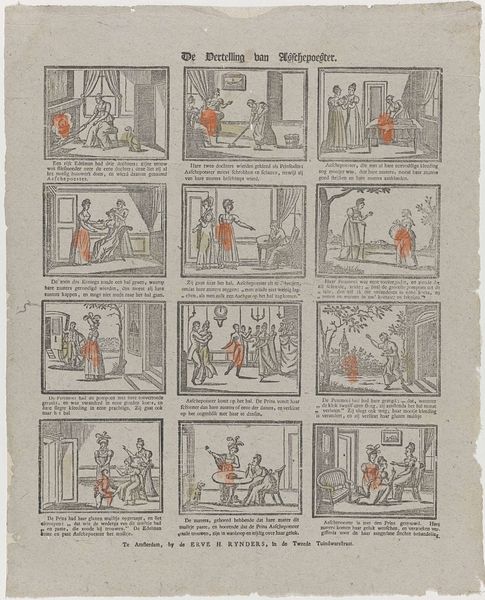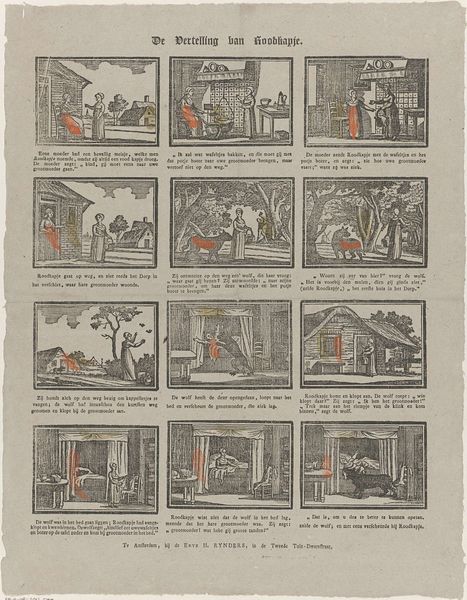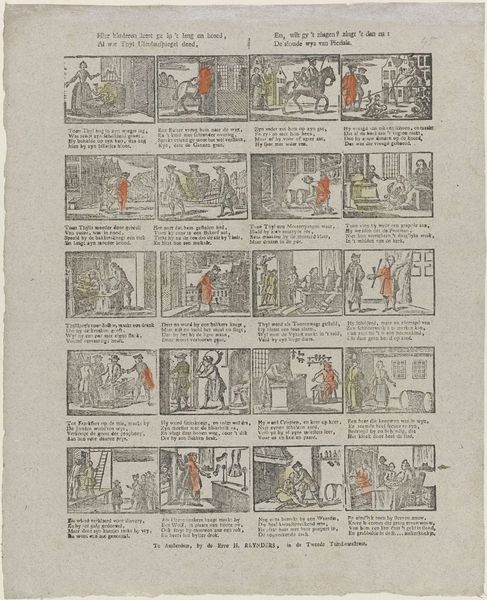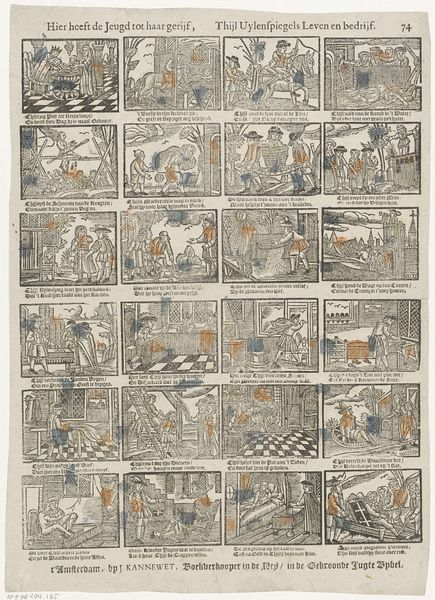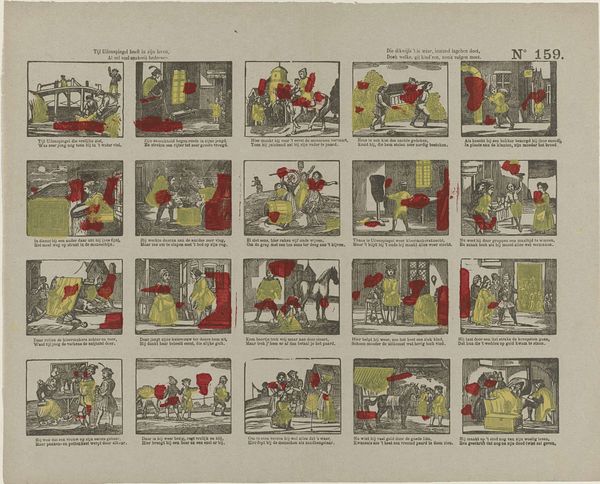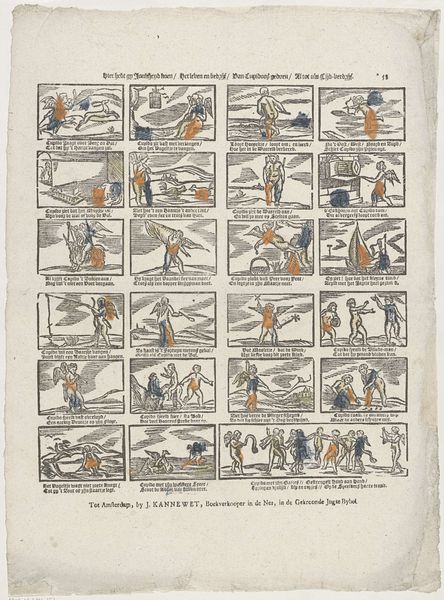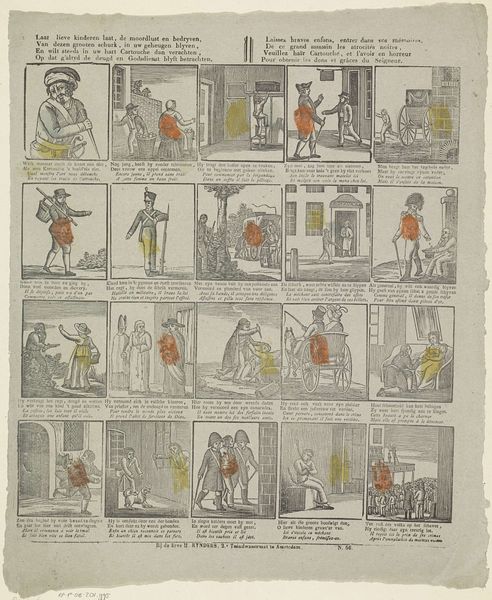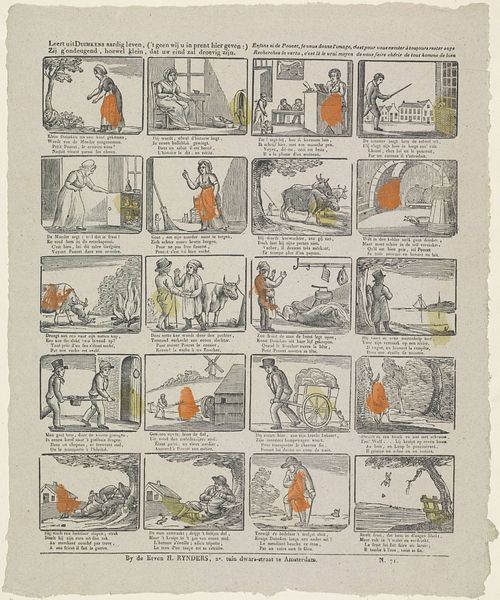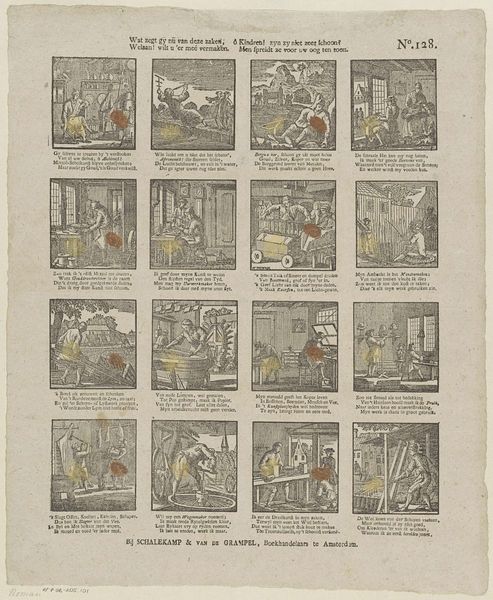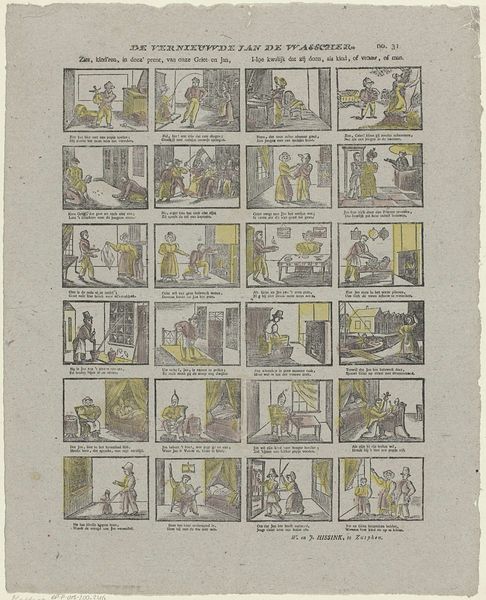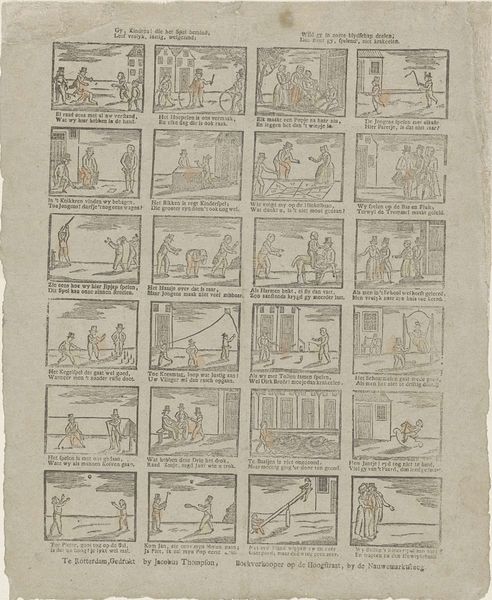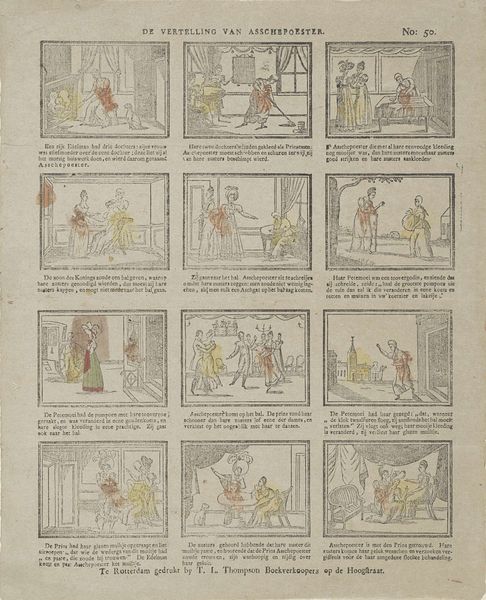
In 's menschen hart zijn veel gedachten / Elk leer' zich voor verkeerdheid wagten 1831 - 1854
0:00
0:00
ervehrynders
Rijksmuseum
print, engraving
#
comic strip sketch
#
narrative-art
# print
#
pen sketch
#
sketch book
#
figuration
#
personal sketchbook
#
sketchwork
#
folk-art
#
pen-ink sketch
#
comic
#
line
#
pen work
#
sketchbook drawing
#
storyboard and sketchbook work
#
sketchbook art
#
engraving
Dimensions: height 398 mm, width 322 mm
Copyright: Rijks Museum: Open Domain
Curator: Looking at this print, it's almost like stepping back in time to a different storytelling medium. "In 's menschen hart zijn veel gedachten / Elk leer' zich voor verkeerdheid wagten," created by Erve H. Rynders between 1831 and 1854, residing here at the Rijksmuseum. It's an engraving that seems to unfold as a sequence of images with accompanying text. Editor: It's utterly charming, isn’t it? Like a little handmade book leaped onto a single page. I am drawn to the homespun, heartfelt quality of each scene—a bit naive but sincere. And the recurring heart, like a red, beating theme...what's that all about? Curator: Indeed, the sequence with the prominent hearts serves as an accessible visual morality tale from the 19th century. Its title translates to, roughly, "In man's heart are many thoughts / Everyone learn to ward off wrong." The images depict scenarios—domestic scenes, nature, characters interacting with animals—all paired with a moralizing snippet of text. These prints, broadly circulated, played a significant role in shaping social values and didactic instruction. Editor: So, like a visual sermon intended to guide behavior and promote virtue? Interesting to see this form pre-dating what we now consider comic strips, with these miniature narratives fitting onto a single page. Some are rather bleak – the wolf, the ominous owl, some feel like warnings of consequence. Curator: It certainly reveals aspects of nineteenth-century views on morality, conduct, and societal expectations. These visual parables acted as accessible teaching tools for a largely literate population to guide beliefs and conduct within a shared framework. Its circulation, then, speaks to the era's focus on promoting ideals in society and within family life. Editor: Makes you think about art's role, doesn't it? From didactic messages to playful explorations – both can reveal the truths we try to grasp and communicate, like light caught in different facets of a gem. Curator: Indeed, seeing the layers embedded in what looks like a simple page underscores how historical artworks echo the society which spawned it, in the art as much as the heart.
Comments
No comments
Be the first to comment and join the conversation on the ultimate creative platform.
